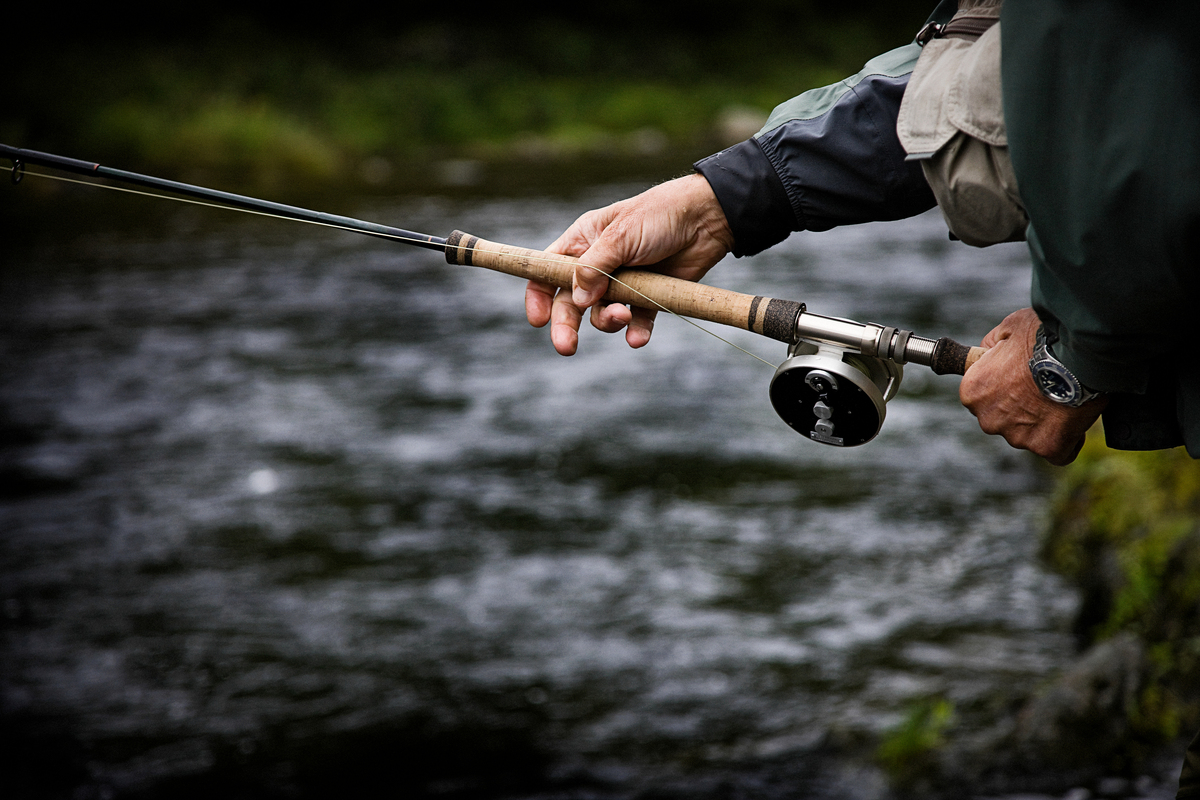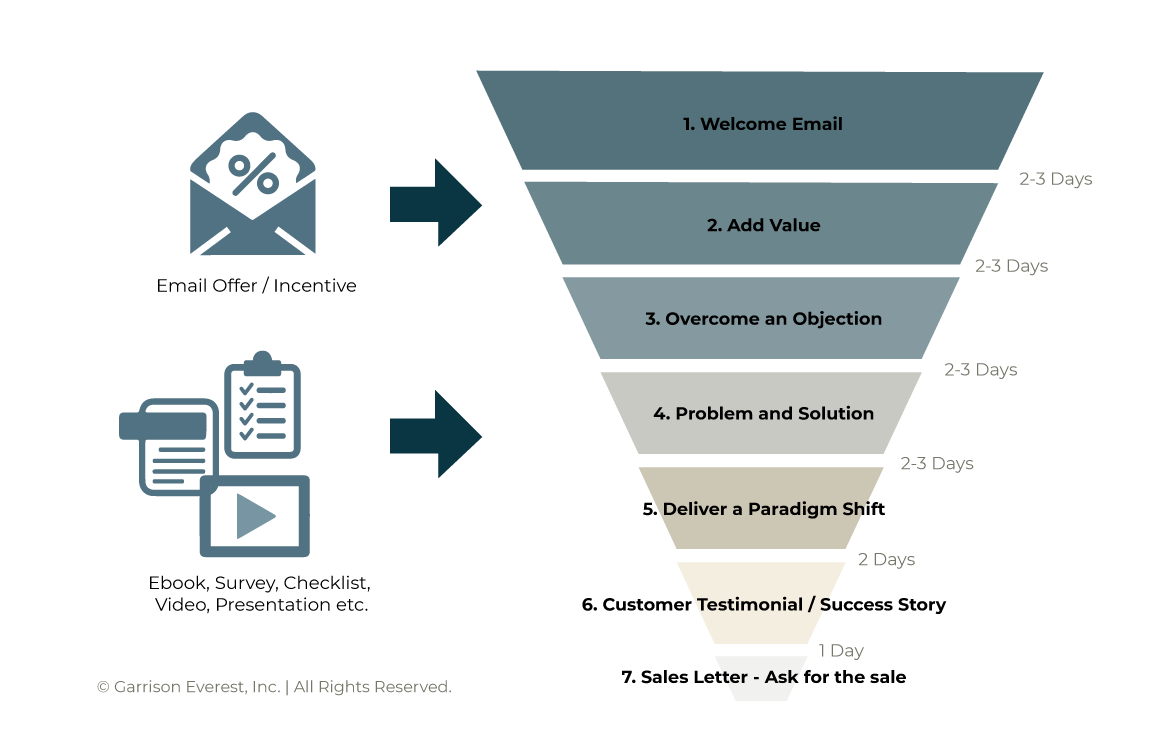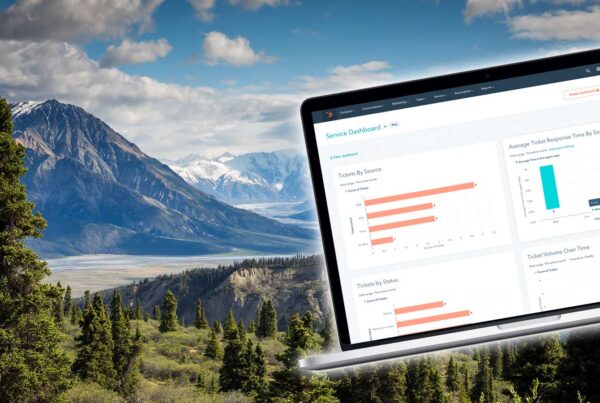
Article first appeared in GuideFitter Journal Summer 2021
Most outdoor businesses struggle to find cost-effective ways to harness their outdoor industry marketing website traffic and generate qualified contacts/subscribers. Many will spend hours creating newsletters only to have no one open them or read them. This work results in wasted time and money and ultimately giving up on making email marketing work.
But what if there were a better way? What if people looked forward to your emails and were compelled to open them?
According to HubSpot, a marketing software company, email generates $38 for every $1 spent, which is an astounding 3800% return on investment, making it one of the most effective marketing options available. Furthermore, over 59% of marketers say email is their most significant source of ROI. So how can you take advantage of this highly effective strategy to grow your business?
This article will introduce you to a simple strategy based on a hypothetical guide service (but can be used for product companies too) we’ve implemented numerous times with clients in the outdoor industry that will help you build brand awareness, generate and nurture leads 24/7/365 and add revenue to your bottom line.
Step 1 – Create a Clear Message based on a Story
Any effective email marketing program should be based on a story-based framework. Psychologists have proven that story is hardwired into our brains. It’s the reason why movies can hold our attention for hours, and campfire hunting stories never get old.
Below is a framework based on a process called StoryBrand™. This framework show you how to write story into your marketing by answering the seven questions your customers are asking in a story-based order. By answering the below questions, you will have all the words you need to write and create an effective automated email program. I’ve also included example responses.
- What does your customer want?
They want the fishing trip of a lifetime. - What problem does your product or service solve?
Our guided trips give you memories that last forever. - Have you positioned your service as the solution to their problem? We understand what it’s like to want to fish the most exciting locations in North America, which is why we specialize in dream fishing trips.
- How do they do business with you? Or, in other words, how do they go about booking a trip with you?
To book your dream fishing trip, pick your date, complete our questionnaire and submit deposit. - What is the call to action?
Book Now! - What does a successful fishing trip look like?
Smiling faces of past clients with monster trout. - What does it look like if they don’t choose your service?
We make you feel at home and won’t leave you going home empty-handed.
By taking the time to answer the above questions, your business will have a more straightforward message and copy blocks to create the emails outlined below.
For more information on how to clarify your message and write your business’ story, check out this article.
Step 2 – No One Wants Your Newsletter
Once you have your story questions answered, you now need to create a way to collect email addresses. It may come as a shock to you, but prospective customers don’t want to read your newsletter. They want to know more about how you’re going to solve their problem, deliver a world-class experience, and create a lifetime of memories.
Two types of buyers show up on your website: direct and transitional.
- Direct buyers are people who know of you, heard about you, or got referred to you and are ready to book.
- However, transitional buyers need more information and time to understand what you offer. For this reason, we suggest creating a lead generator. A lead generator is a piece of content (ebook, video series, checklist, or guide) that warms your prospect up to the idea of doing business with you. They should find your lead generator valuable enough to give you their email address. For example, you may create an ebook that showcases the area your fishing in more detail—complete with specifications, maps, fantastic photography, and success stories. Or you may design a “What to Bring to on your Fishing Trip” checklist that gives your prospect a better idea of what to expect that smooths out any fears, concerns, or questions they may have. The idea here is to get them to say, “tell me more.” Put yourself in your prospective client’s shoes and give them something they will find both valuable and memorable.
Step 3 – Write Your Automated Email Sequence the Right Way
Once you’ve had your web developer add a form to your website for prospects to download your lead generator, you now want to keep the interest and momentum going by staying top of mind in their inbox.
The human brain needs to see your brand message 7-8 times before it can be internalized, noticed, and taken action on. Also called the Rule of 7. We live in a high-distraction world, and it’s easy for people to forget why they visited your website, so it’s your job to remind them.
At this point, you’ll want to pull out the answers to your story questions and begin using them to create your copy. Each email should be sent 2-3 days apart at 7 AM to your prospects’ time zone.
The email should also include:
- Your logo
- Links to your social media accounts
- Contact information
- One button at the bottom that calls the prospect to Book Now/Buy Now
- Welcome Email – The welcome email is just what it sounds like. It’s your chance to thank them for downloading the lead generator and introduce them to your product or service by stating the problem you solve. You may want to welcome them to your family or give them a discount on any future bookings or sales.
- Add Value #1 – The second email should offer helpful information. Resist the urge to sell—try to help. For example, you may want to talk about making the most of their guide trip or offering best practices when traveling with equipment.
- Add Value #2 – The third email should, again, add value. This time you may want to offer recipes or tips on how to stay warm and dry at altitude in October. Once again, the idea is to warm your prospect up to the idea of doing business with you.
- Overcome an Objection – At this point, you should see an average open rate of 50% and click-through rates around 20%. These are good indicators that your prospect is still interested in your service. This email should begin to address any friction points they may be having. Friction points consist of price, the location of your lodge, fitness level, or transportation obstacles. Address those objections and offer solutions with transparency.
- Problem and Solution – In this email, list the problems your guide service solves. People book guided trips for all kinds of reasons. Perhaps they’ve always dreamed of fishing the Miracle Mile in Wyoming. Maybe they are taking their son or daughter for their first fishing trip. Or they are looking to create some lifelong memories with their friends. Address these problems and what the customer wants—and tell them how you solved them with past clients.
- Deliver a Paradigm Shift – A paradigm shift means your prospective customer thought one way about your guide service but now thinks differently. For example, they may have considered all guide services are the same—when in fact your guide service offers much more. If your service or product is different, explain why that is.
- Customer Testimonial/Success Story – Next is the email that tells what your customer’s life looked like before they booked a trip with you and how their life has changed after their trip. Ask for your clients to provide their stories and highlight them in this email.
- Close with a Sales Letter – Finally, if they haven’t booked with you but are still opening your emails – offer a time-sensitive incentive like 10% off if you book with us by the end of the month. Ask for the sale with a clear call to action: Book Now! If they open the email, reach out personally to close the sale.
The above sequence gives you almost a month of automated emails. It can be used as a baseline strategy to help you create your email automation program. Once you get these emails set up in your email program, begin testing subject headlines and content to see if you can improve open rates, click-through rates, and bookings.
Your lead generator can also double as an advertisement on social media or other platforms. Use it at trade shows and local events to generate leads.
In conclusion, the above gives you a simple strategy for creating an effective lead generation and automated email workflow. Start by clarifying your message through story-based elements. Create a valuable lead generator in the form of an ebook, checklist, video series, or guide that your prospects will exchange their email address for. Then create a series of eight emails that nurture your prospective leads that keep your guide service top of mind, which incentivizes them to book. Don’t worry about doing it perfectly right away. Like anything, it takes time to get it right. Just by having this strategy in place, you’ll begin to see results that grows your business.






